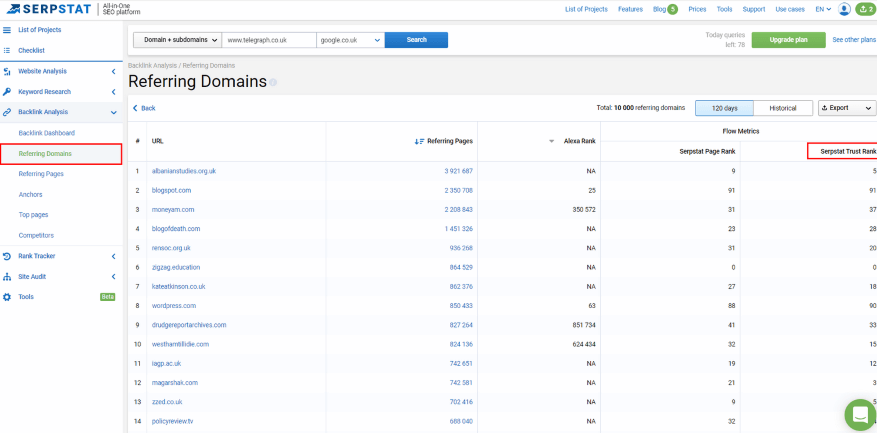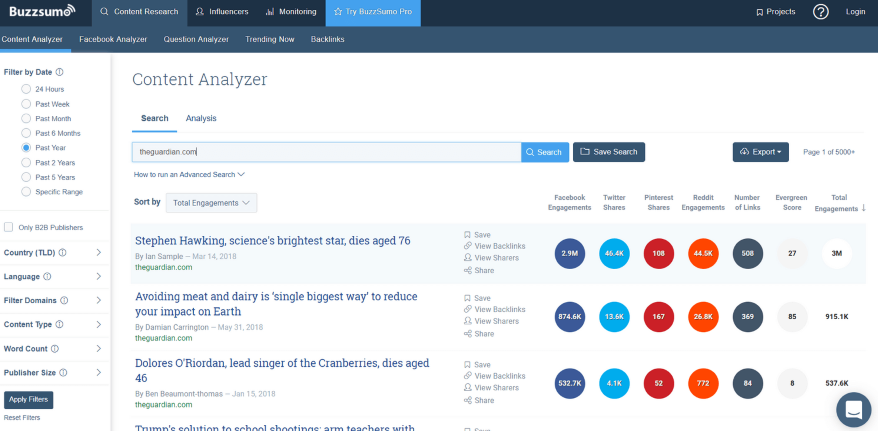Links are still important for your site’s SEO. Read the post to discover how to get backlinks for your website in 2019.
Running an online business and focusing on SEO, you’ve faced wide discussions on how backlinks impact your website’s ranking.
The only conclusion you should make after reading all the opinions on this topic is that backlinks do have a positive effect on SEO.
Sadly, knowing of the backlinks’ importance and being able to build a high-quality link profile isn’t the same.
Without a doubt, buying links on forums or other resources isn’t a good idea at all.
But how can you build authoritative backlinks not being a top influencer in the niche?
In this post, I’ll give seven tips to how you can build a trustworthy link profile for your website.
Why Backlinks are Important for SEO
First of all, external links leading to your website help search engines discover new pages.
To master how it works, you need to understand the process of crawling before your site is ranked in search results:
Crawling is a process of detecting and collecting new and updated pages to add them to the search engines index.
A crawler is a search robot systematically browsing the Internet and comparing URLs found with those which already exist in the index.
Sometimes, it takes too long for your page is found by a crawler. So, make sure you place links to your content on other sources related to your subject.
Moreover, when a search robot has found your page, it should determine how the page should get ranked in search results.
For this purpose, a crawler not only analyzes the content you post but also evaluates the quantity and trustworthiness of pages which link to your website.
As backlinks are sure to matter for SEO, it’s time to answer the most important question: How to build an authoritative link profile to improve your ranking?
1. Find sources: Analyze your competitors’ backlinks
To get trustworthy backlinks isn’t enough to just find some random websites. Looking for all the relevant ones to your site sources manually is quite a time-consuming process.
Relevance is critical. If your site is about Dental SEO, you don’t want to be getting backlinks from a fashion site!
The best solution to this problem is conducting competitor analysis. SEO tools such as Serpstat and Ahrefs will provide you with all the necessary data on your rivals’ link profiles.
I’ll go with Serpstat: enter your competitor’s domain into the search field, choose the search engine you rank for, and see the comprehensive analysis of their backlinks.

Click on Referring domains and Serpstat will provide you with a list of all the websites which link to your competitor’s site.
Select those with a high Serpstat Trust Rank score as it evaluates the trustworthiness of the source for search engines.
2. Guest posting
Once you’ve identified your potential backlink sources, you should think of the ways of making them link to your website.
The first and the less complicated one is to guest post on the blogs you’ve selected.
Here are the essential steps to guest blogging which will help you build effective backlinks:
- Familiarize yourself with the blog subject.
- Discover the most popular topics. You can use Buzzsumo: enter the domain and see the most shared posts on the blog. It will help you come up with the idea of your post which provides an actual value for the visitors.

- Create an article addressing subjects of interest of the blog target audience.
- If you want to promote an informational blog, add a link to one of your articles connected with your guest post subject or to some infographic you created for your blog.
- If you promote the service or the product, attach a link to your website and show how it can solve the audience’s problem.
Blogs usually have the section with the main requirements for people who want to publish their articles there. Follow these rules to increase your chances for your topic to be posted.
3. Link to other websites
It may sound controversial but, by promoting other websites, you can promote your site as well. Just make sure you link to authority sources.
So, how can outbound links influence your profile? Pretty simple.
When a link from your website brings some remarkable profit to the others, there are huge chances their owners will notice it while analyzing increases in their traffic.
Consequently, they may visit your site and decide your post is good enough for linking to it (especially, considering the fact that their company is mentioned in the article).
4. Mention big brands or celebrities
This paragraph is kind of a lifehack. Mentioning famous people or brands, you get an opportunity of going viral.
For instance, running an informational blog, you can publish the results of a survey for the best marketing strategy ever.
The competitors may be such brands as Nike, Coca-Cola, KitKat, etc.
People will vote for their favorite brands and share your pole on other sources.
If you’re lucky enough and your rating will gain extreme popularity, these giant companies may also notice you and link to the voting on their websites or social platforms.
Of course, these giant companies are just examples. Mention successful companies or personalities in your particular niche, and you’ll see they’ll get engaged with your idea.
5. Stay active on social media platforms
Although your social media presence doesn’t influence your ranking directly, it still matters.
Firstly, social networks are one more source where people can discover your new content or even find out that your brand actually exists.
The higher your brand awareness is, the more chances people will trust your articles and link to them in the future.
So, make sure you created social accounts for your business and:
- Added a link to your website;
- Attached links to every new piece of content in your social media posts.
6. Broken link building
What is it? It’s a practice of identifying broken links (those which don’t work anymore) on other sources.
Then, creating posts on the same subject as dead content was and suggesting website owners replace those links with your new ones.
The good news is that people will happily agree to your offer as broken links are harmful to their websites.
The not so good news is that it’s quite a labor-consuming process. Fortunately, if you know how to use SEO tools, you’ll quickly cope with this task.
I’ll go with Ahrefs: enter the domain of the source you want to place your link on, go to Outgoing links > Broken links.
Here is a list of its pages which contain dead content:

Let’s make sure it works. You can see the anchors of each broken link. It’ll help you identify it on the page where you want to suggest new content.
Now go to the post, which is the closest to the subject you used to write about, and find the backlink you want to replace.
Here’s a screen capture showing an example of a broken link:

If you could click on the anchor, you would see… Oops, nothing.

I guess it’s a sign you should start writing a new post.
7. Testimonials
The next tip is mostly about how not to spoil your link profile. Testimonials are extremely useful if you want to increase the authority of your website.
Keep in mind that your reviews section may become a place for other websites to place their links.
If these links lead to spammy sources, the trustworthiness of your site will be doubtful.
To avoid it, use ‘rel=nofollow’ for links in your testimonials. It’ll inform search robots they shouldn’t follow such links and index them.
To Sum Up
A high-quality link profile is a key to building the authority of your website.
As Google claims that trust is one of the ranking factors, consider that the quality of your backlinks is much more important than the quantity.
When working on earning links, make sure you collaborate with trustworthy and relevant websites.
Message from Gail, Founder of GrowMap:
I’m adding this video to the end of this post because I want my readers to understand what Serpstat is:

